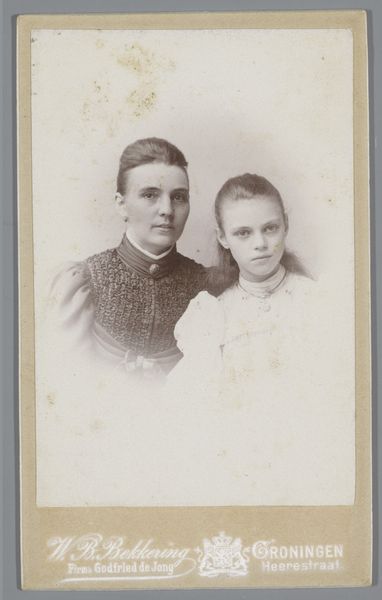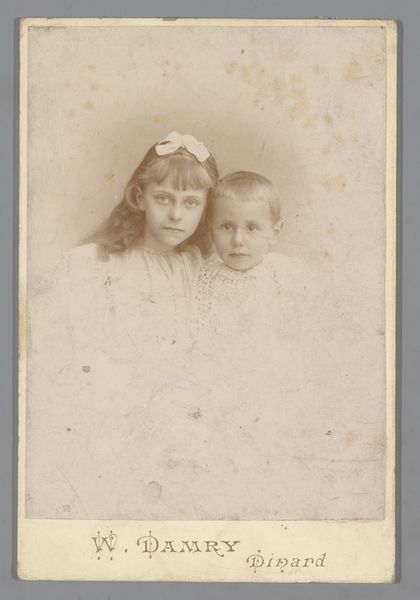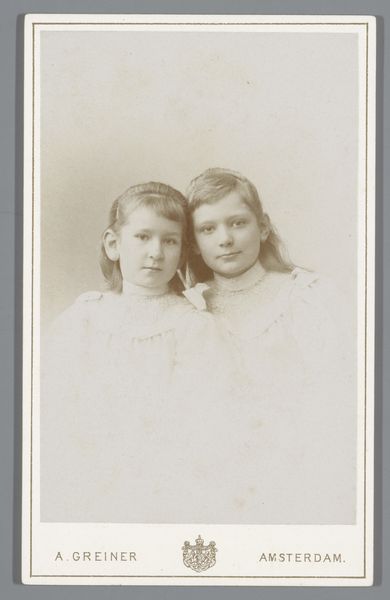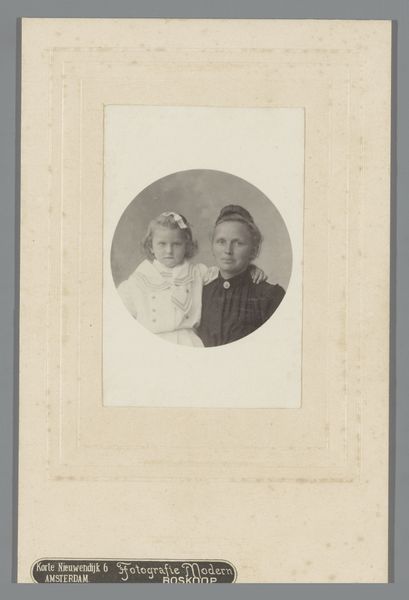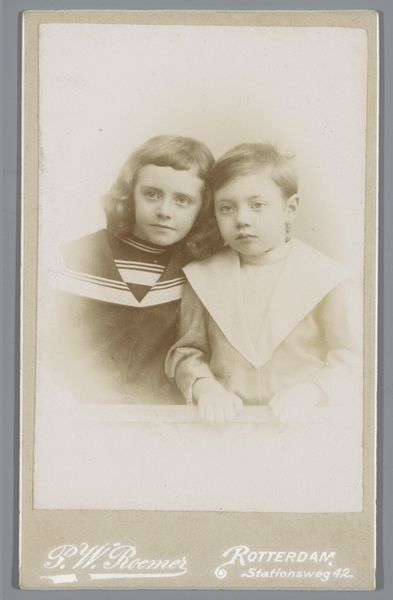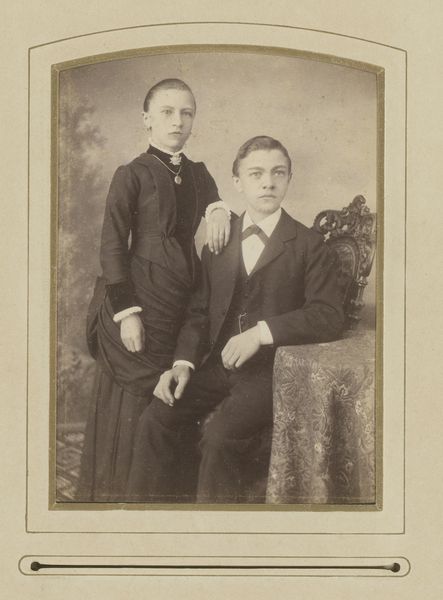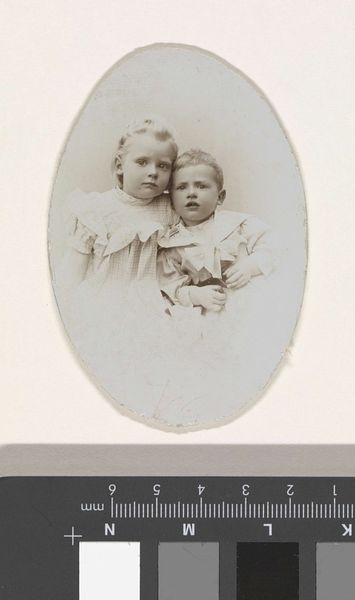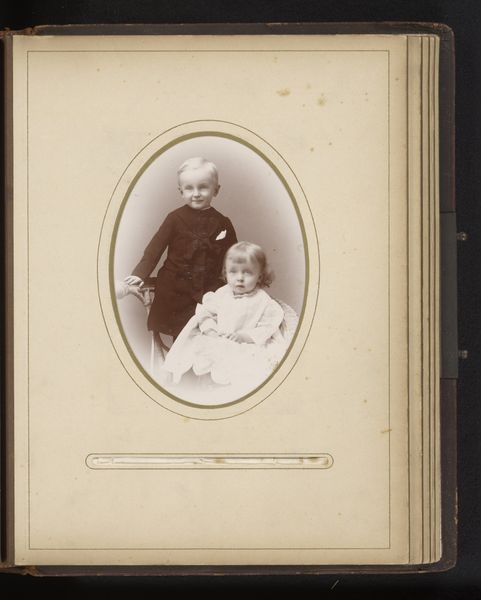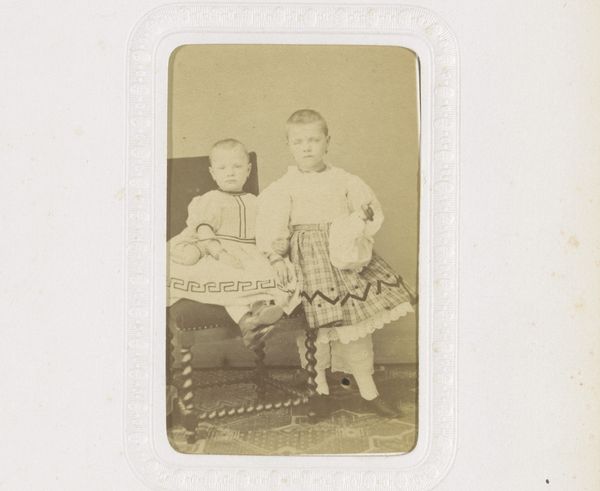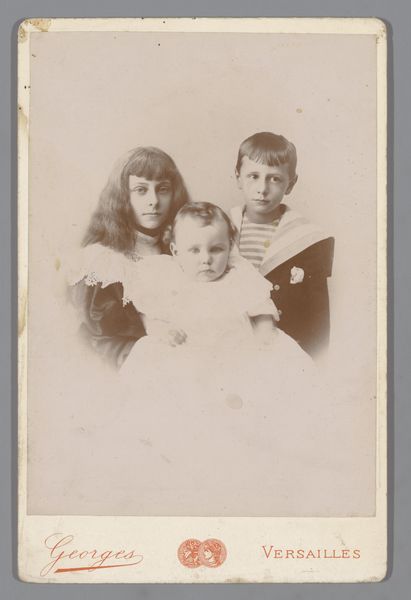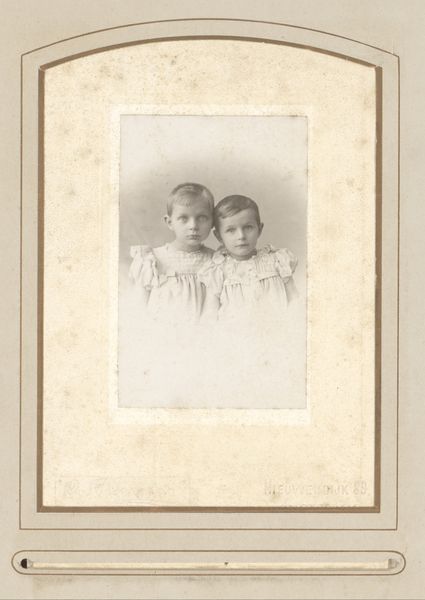
Portret van twee onbekende kinderen, familie van G.N.P. van Eijk 1900 - 1901
0:00
0:00
paper, photography, gelatin-silver-print
#
portrait
#
paper
#
photography
#
group-portraits
#
gelatin-silver-print
Dimensions: height 102 mm, width 64 mm
Copyright: Rijks Museum: Open Domain
Curator: This is a silver gelatin print dating from around 1900-1901, titled "Portrait of two unknown children, family of G.N.P. van Eijk", by Anton Cornelis Thomann. It's on paper and follows a typical portrait style for the era. What strikes you initially? Editor: Those faces. There’s a stillness, a gravity… almost unnerving in such young subjects. They are both staring directly at the viewer, almost judging. Curator: The gaze certainly captures something. The rigid formality would have been the order of the day for portraits like this, not just in the Netherlands but elsewhere, I believe. It tells us about societal expectations for representing children at the time. They aren't smiling, but they're presented in their best light—symbolically innocent in matching white outfits. The bow on the boy might even be seen as symbol of unity, of their bond as siblings perhaps? Editor: I can see that. It feels deliberately staged, the kind of memory that's almost manufactured through its presentation. It does look quite serene, actually, so I'm wondering: What happens to these poised kids five minutes after the photographer puts down his camera? Curator: It is very interesting, isn’t it? We project narratives, create connections to past ideals, when the photograph represents perhaps an illusion. Though, equally valid are the memories of cultural codes carried with those illusions. We expect formality, severity even, and project backward from there. This would be how these images work across the ages, carrying those threads. Editor: Maybe that’s why those gazes stay with me; they seem aware they're participating in a symbol-making exercise, a moment preserved according to some social script, for a posterity that included me. What a performance it must have been! Curator: Exactly. Photography, even in portraiture, allows us to explore evolving social performances. In this, symbols of class and lineage, alongside personal character and psychological interiority are all there. It all combines to reveal and conceal something about childhood, both in 1900, and for us today. Editor: Yes. They still carry that ghost, I think; even without knowing who they were or what happened to them later. Curator: Precisely; they are icons of a lost world, somehow also perpetually present.
Comments
No comments
Be the first to comment and join the conversation on the ultimate creative platform.
